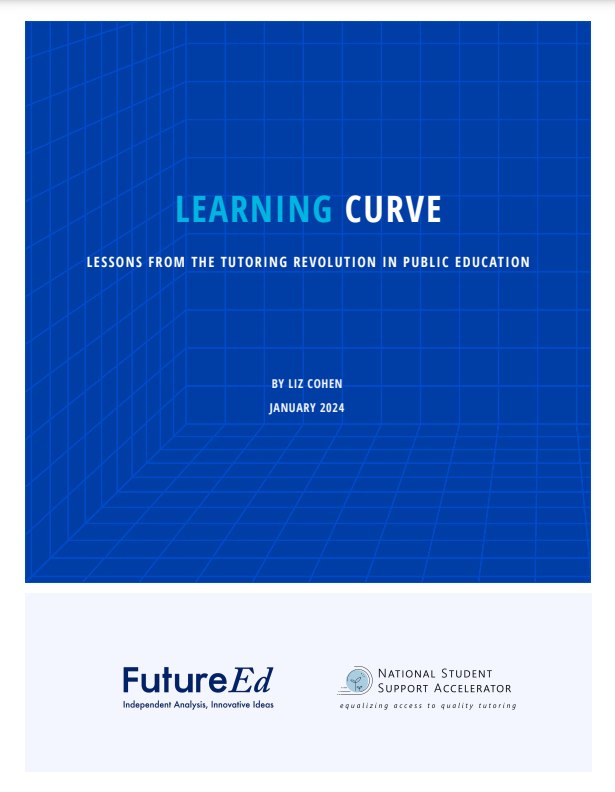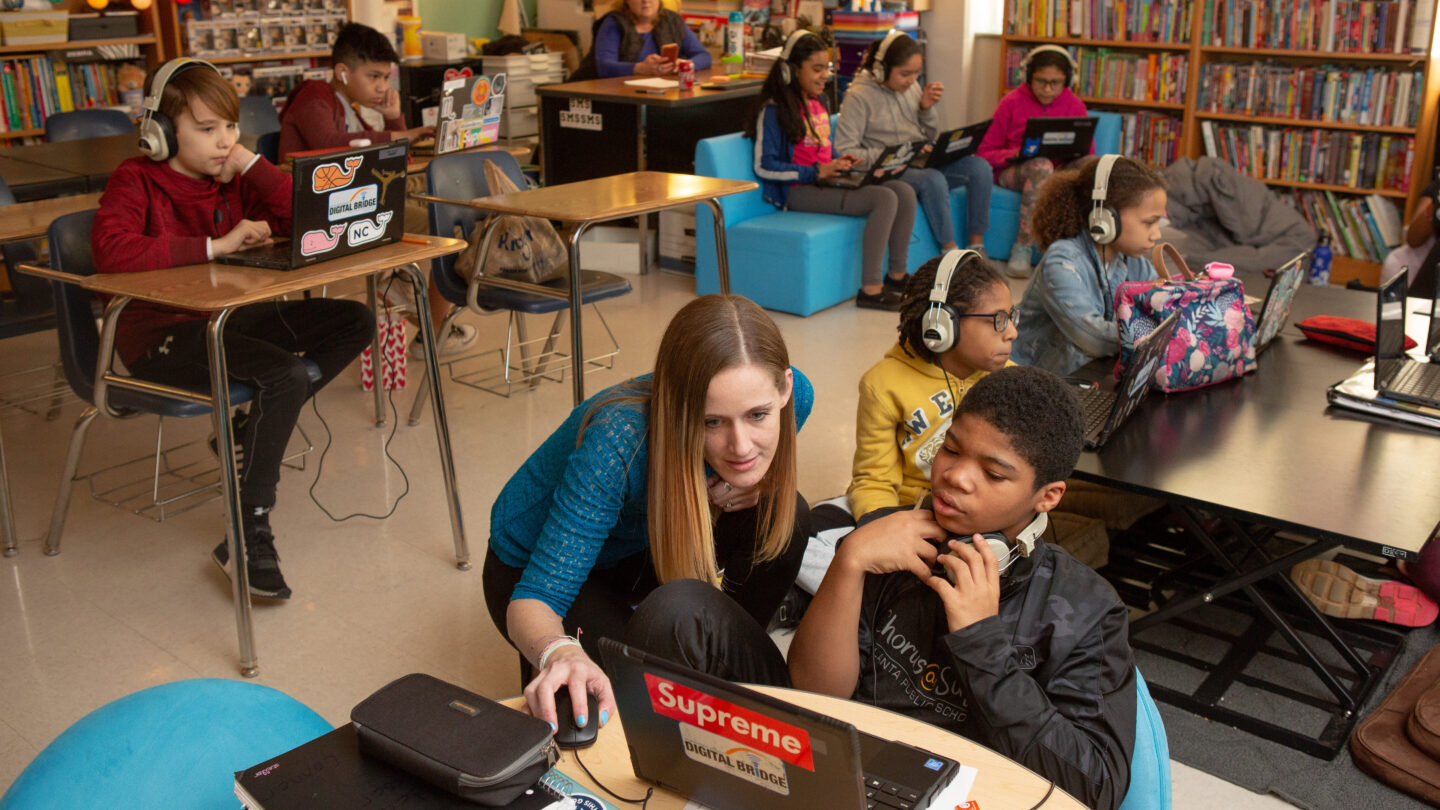 How often does it happen that a national policy priority, robust research, and the aspirations of classroom teachers converge? On an issue with bipartisan support, no less? Not very often.
How often does it happen that a national policy priority, robust research, and the aspirations of classroom teachers converge? On an issue with bipartisan support, no less? Not very often.
But tutoring is an exception. As many as 80 percent of school districts and charter school organizations have launched tutoring programs to help students rebound from the pandemic.
The challenge now is to scale tutoring that research says gets the best results―programs with four or fewer students working with the same tutor for at least 30 minutes during the school day, three times a week for at least several months―and sustain it beyond the fast-approaching expiration of schools’ federal pandemic-relief funding.
Learning Curve: Lessons from the Tutoring Revolution in Public Education, profiles three very different ways to do that. Researched and written by FutureEd Policy Director Liz Cohen under our partnership with Stanford University’s National Student Support Accelerator, the report tells the tutoring stories of schools in Baton Rouge, Louisiana; Odessa, Texas; and New York City, where the additional support of tutors has made a significant impact on students’ well-being and academic success.
The profiles are part of an analysis of the evolving tutoring landscape that also draws on dozens of interviews with tutoring providers, researchers, and school and school district leaders, teachers, and students elsewhere in the country.
Tutoring Profiles
Tutoring as a Catalyst for Instructional Innovation
Ector County Independent School District, Odessa, Texas
Partnerships with Higher Education
Teach for America’s Ignite in Greater Baton Rouge, Louisiana

